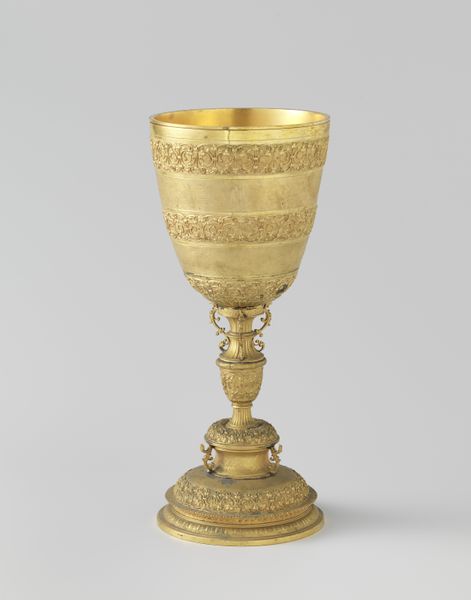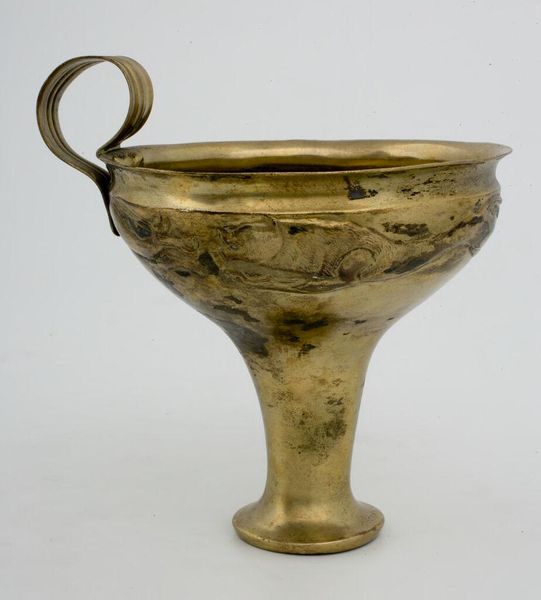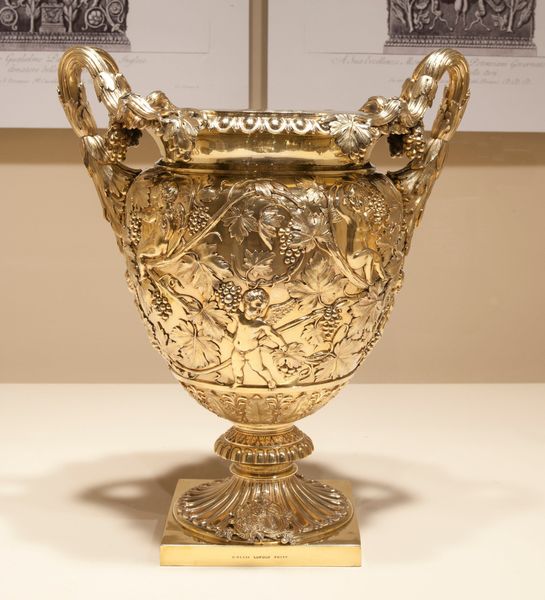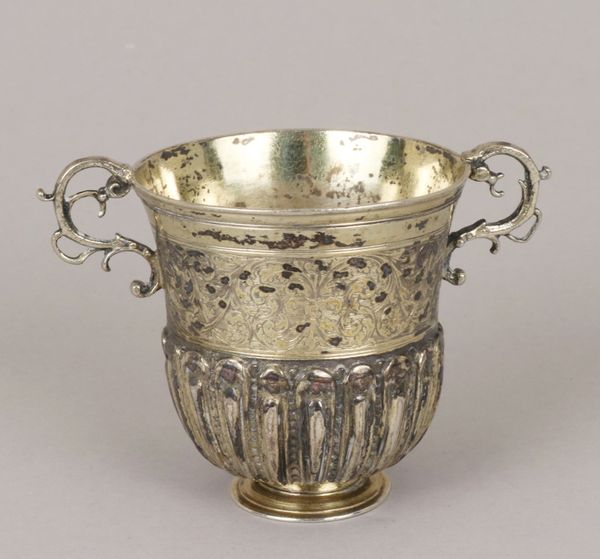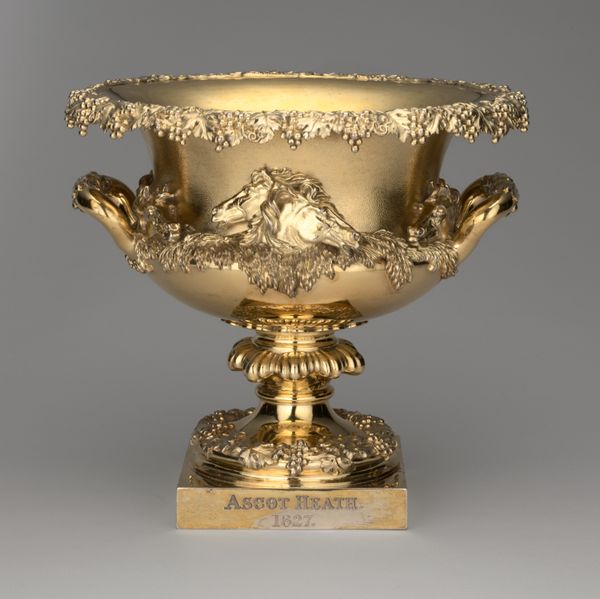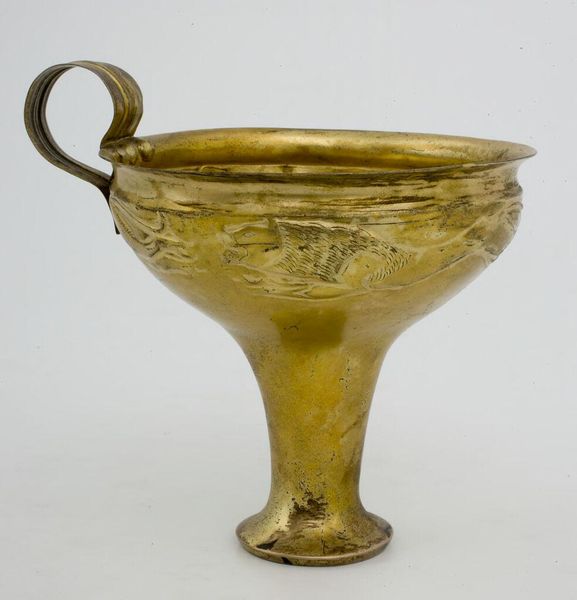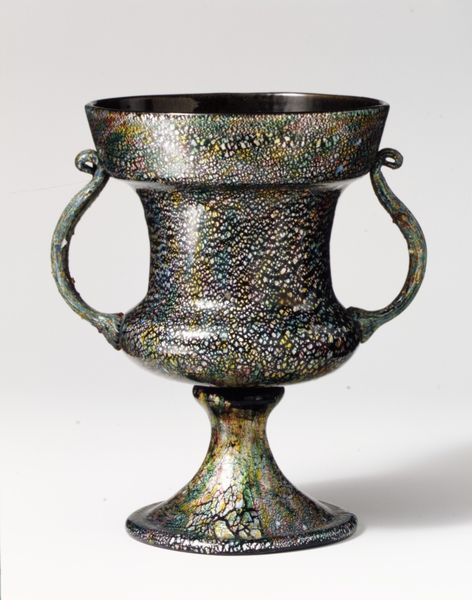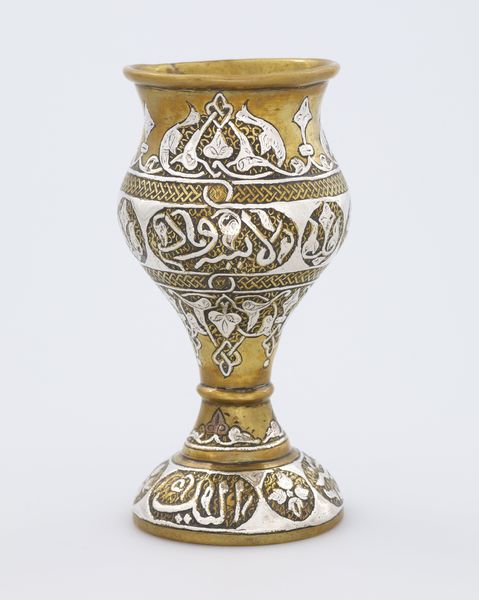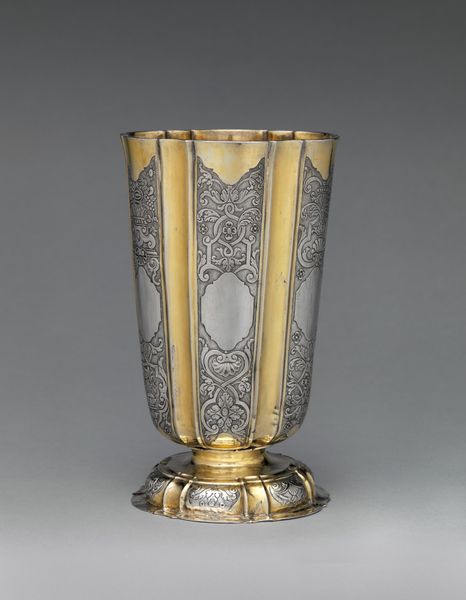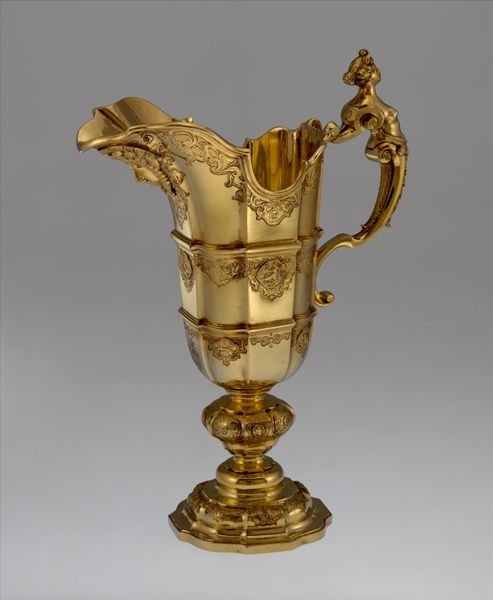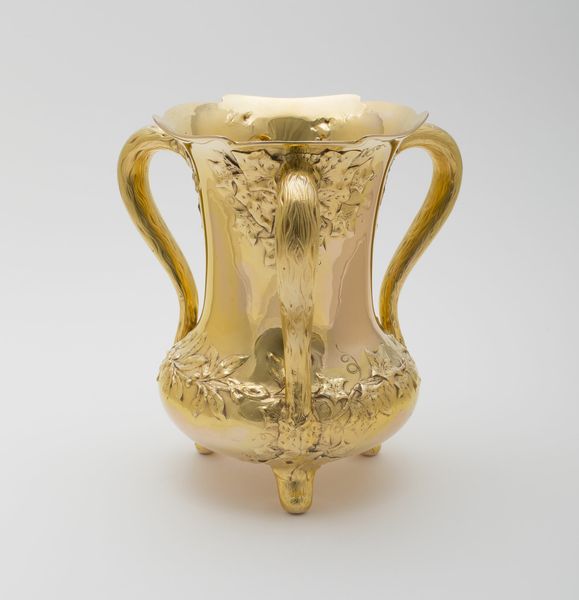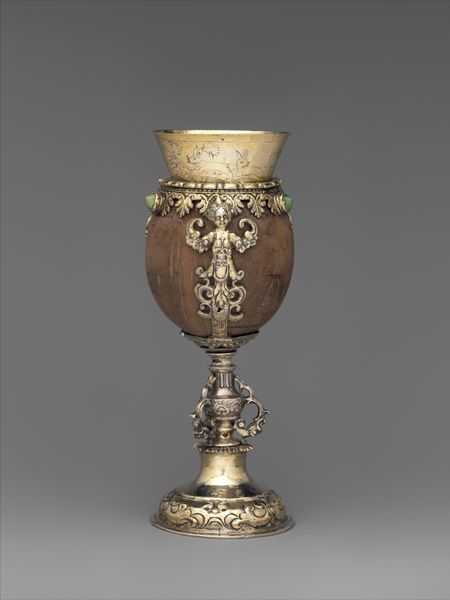
Dimensions: 11 1/4 x 10 1/2 x 10 1/2 in. (28.58 x 26.67 x 26.67 cm)
Copyright: Public Domain
Editor: We're looking at a silver wine cooler by Paul Storr, dating back to about 1825, housed right here at the Minneapolis Institute of Art. The density of detail is the first thing that grabs you. How do you even begin to unpack something so ornate? What strikes you when you look at it? Curator: The wine cooler presents a fascinating study in form and texture. Note how the Baroque revival style emphasizes volume and dynamism. The profusion of grapevines isn’t merely decorative; it’s integral to the sculpture's conceptual framework, unifying form and function. Consider the interplay between the smooth, polished surfaces of the handles and the textured body of the cooler. Editor: So, the contrast is intentional, not just a consequence of the engraving? Curator: Precisely. It accentuates the object's three-dimensionality, guiding the viewer's eye across the sculpture's contours. Look closely at how the light interacts with the silver. The repoussé work creates highlights and shadows, adding depth and vitality. What emotions are conveyed by the cool and smooth surface of the wine cooler? Editor: Now that you point it out, the play of light and shadow does make it seem like the grapes are almost growing before your eyes! I initially thought it was *just* decoration. I suppose the decoration serves as more than decoration here. Curator: Exactly. And the form enhances that impression. So we move beyond pure decoration to function and then meaning. I’ve refined my eye once again thanks to this fascinating object. Editor: Thanks! Thinking of art with the semiotics really changes my viewpoint and perspective!
Comments
minneapolisinstituteofart about 2 years ago
⋮
The wine cooler, or ice pail, was a French refinement for keeping wines cold at the dining table. By the Regency period in England, the wine cooler had become an important part of the decorative scheme, almost a piece of sculpture that was left out for the entire meal. Storr's Neoclassical design echoes a classical Greek vase. The handles are cast in the shape of twining grape stems, and the body is elaborately decorated with a profusion of cast and chased grapevines, acanthus leaves, scrolls, and vases of fruit. This wine cooler was repurposed as a racing trophy for the Ayr Gold Cup the same year it was made. The horse race has been held in Ayr, Scotland, since 1804 and still takes place each September. The inscription notes that John Anstruther Thomson was the owner of the winning steed, Lancer.
Join the conversation
Join millions of artists and users on Artera today and experience the ultimate creative platform.

